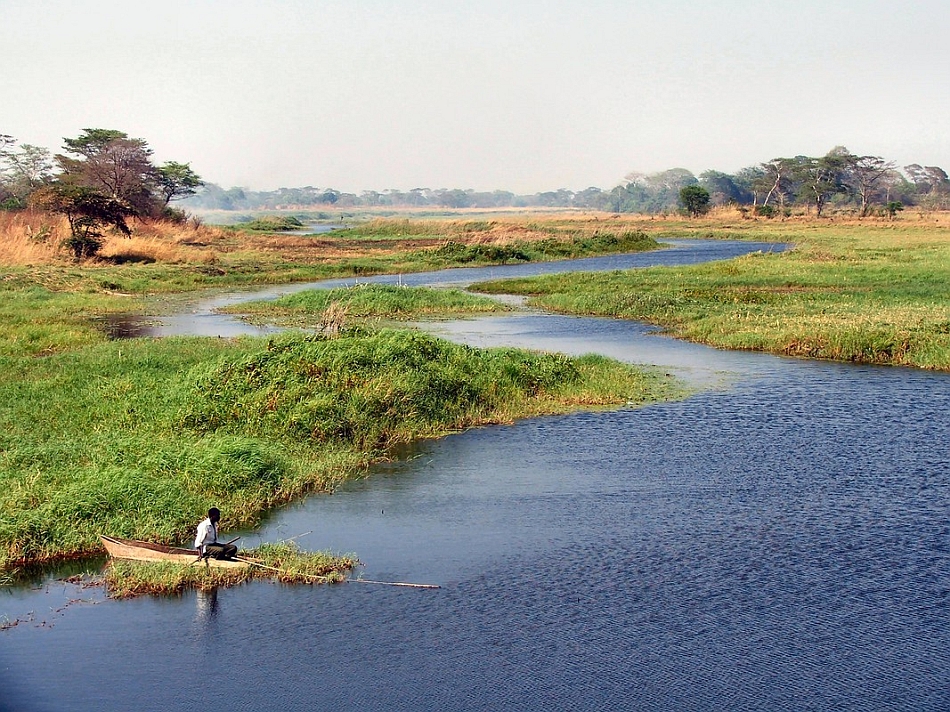By Matthew McCartney, Research Group Leader – Sustainable Water Infrastructure & Ecosystems, IWMI

As Europe swelters in unprecedented summer heat, water stress is a major and growing concern. The same is true for many places across the globe. The need for more water storage is obvious but simply building more dams is not the solution.
Growing populations and economic development are driving the need for more water storage globally. Climate change – modified rainfall patterns, increased evapotranspiration and melting glaciers – is exacerbating water stress in many places. To cope with increasing water scarcity and greater frequency and magnitude of droughts (and conversely floods), we must increase water storage. Put simply, water needs to be saved in wetter times for use in drier times.
Paradoxically, even as more is needed, water storage is declining. A recent IWMI study estimated that worldwide water storage has decreased by 27,000 billion m3 over the past 50 years. Decades of lake, wetland and soil degradation, reservoir sedimentation, and over-abstraction of groundwater, have all reduced water storage. Another study showed that, in the last 20 years, so much water has been abstracted from groundwater aquifers that it has not only added to sea level rise, but also altered the tilt of the Earth. Declining water storage is a major contributor to local and regional water crises that threaten millions of people and ecosystems worldwide.
The traditional answer to growing water stress is to build more dams and store water in reservoirs. Today large dams, of which there are more than 55,000 worldwide, represent a cornerstone of social and economic development. Without large dams, agriculture, industrial development, and economic growth would be adversely affected in many countries.
Unfortunately, failure to pay sufficient attention to the environmental impacts and the needs of the poor and most marginalized, has meant that the building of large dams has been extremely controversial. Over the past 70 years, large dam construction globally has resulted in the loss of biodiversity and ecosystem services and threatened the livelihoods and well-being of hundreds of millions of people. Not only have many communities been displaced by reservoir inundation, but changes in river flow downstream have undermined riverine (aquatic) ecosystems and the livelihoods of many people (e.g. fisherfolk).
It is a cliché but true, “the poor pay the price of development”. Invariably this is the case with large dams, where the benefits accrue primarily to urban elites whilst the poor reap the consequences, gaining little or nothing. This is no longer acceptable. Sustainable development requires us to identify and put into practice not only more equitable solutions, but also those that provide a more appropriate balance between exploitation and protection of the natural world.
Consequently, the planning of, and investment in, water storage must go far beyond dams. Generating economic growth to lift the world’s poorest people out of poverty and meet their basic water, food, and energy needs, can only be sustainably achieved if future investments are rationalized and redirected away from traditionally built infrastructure. Instead, investments should be focused on implementing technology that is affordable, socially and culturally acceptable, and environmentally sustainable. Actions to stop and reverse the loss of both natural and built water storage would help enhance water security and buffer the negative impacts of climate change on ecosystems and society. Recognizing that there is a continuum from natural to built infrastructure, it is essential that we work towards a more comprehensive understanding of water storage “systems” that comprise both. We need to identify, design, and implement solutions that enhance complementarities and synergies, whilst also minimizing the trade-offs in benefits accruing from all forms of storage. Rewetting wetlands, regenerating soils, promoting infiltration, reconnecting floodplains, and re-meandering rivers all have a crucial role to play in slowing and storing water across landscapes so that more water is available for both people and nature.
Insufficient storage greatly complicates future water resource management and undermines the resilience of increasingly “thirsty” human societies. Fully integrating natural infrastructure alongside built infrastructure in water resource planning and management requires a systems approach that accounts for multiple ecosystem services and recognizes trade-offs from the perspectives of all stakeholders. This must be the future of water storage.

